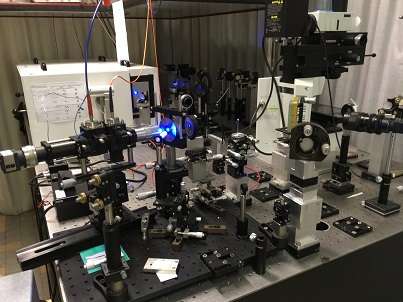Physics of Glassy State (VERR)
Coordinator : Bernard HEHLEN
| Enseignantes-Chercheuses & Enseignants-Chercheurs : FORET Marie HEHLEN Bernard RUFFLE Benoît WEIGEL Coralie | Doctorant : PERRADIN Julien |
Glasses present the great challenges of complexity. Amorphous solids are basically distinguished from their crystalline counterparts by the lack of the helpful periodicity. Understanding and describing the structure and properties of the glassy state poses enormous difficulties and remain a fundamental problem in condensed matter physics.
However, the situation is evolving rapidly as new experimental, computational, and theoretical methods are continuously developed. Last decade has seen impressive advances for example on the glass transition problem or on the fate of the short-wavelength sound waves in disordered solids.

Glass is also an essential material in currently emerging technologies. High-value glass products are nowadays made of quite different classes of amorphous materials including metals, inorganic semiconductors, bioactive compositions, polymers, silicates…
The study of dynamic, vibrational or relaxational properties of disordered systems is the main direction of the group’s activities.
For this, complementary spectroscopic techniques such as Brillouin scattering of light and X-rays, inelastic neutron scattering, Raman and hyper-Raman scattering are used.
The combined use of innovative optical time and spectral-domain spectroscopy has led to significant advances in the understanding of the elastic and vibrational properties of glasses and their relationship with the disorder at the molecular scale and at the nanoscale. We are expanding our expertise to vibrational spectroscopy under extreme conditions (temperatures and pressures).
We are also developing activities around ferroelectric relaxors, and more recently organic-inorganic hybrid perovskites…